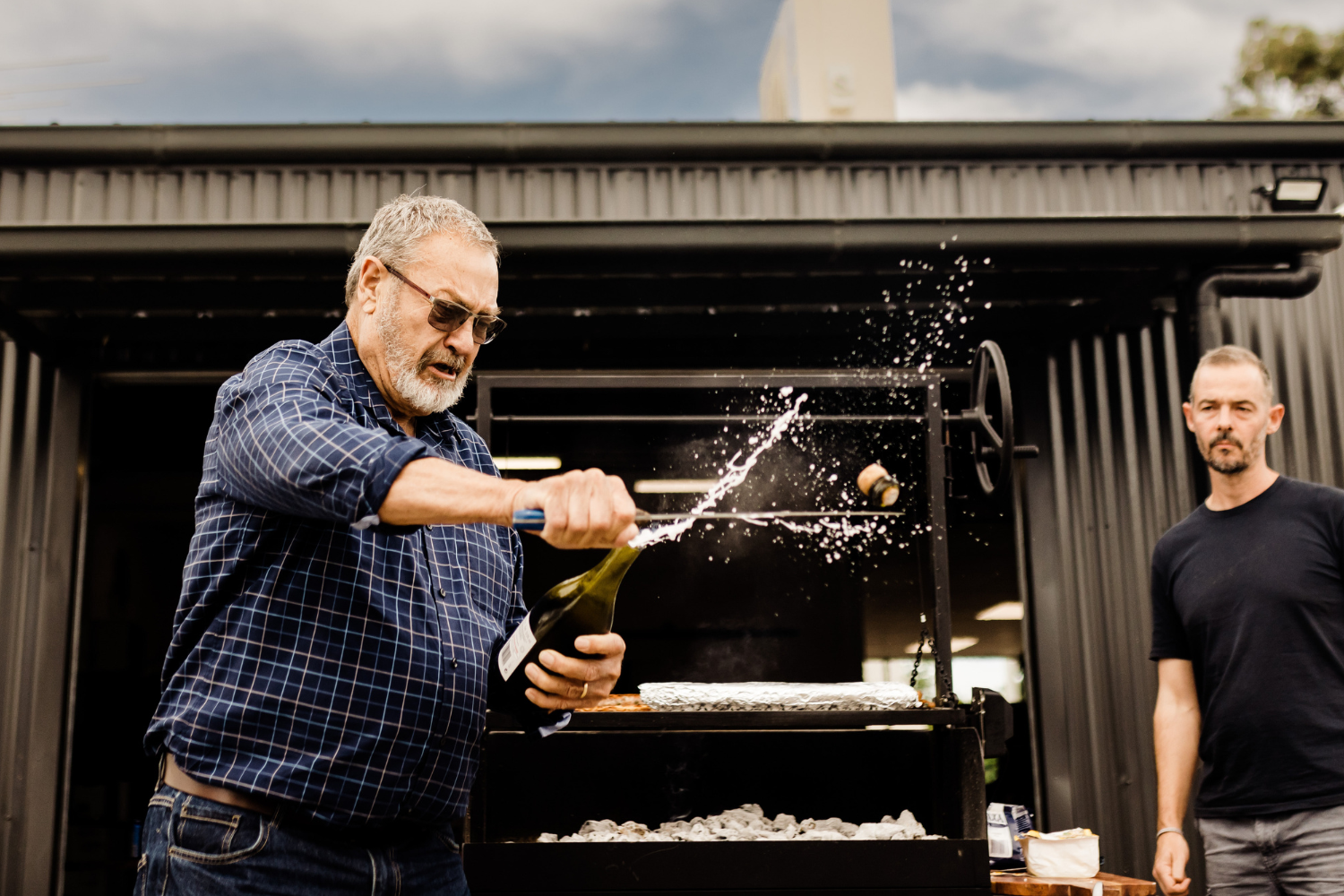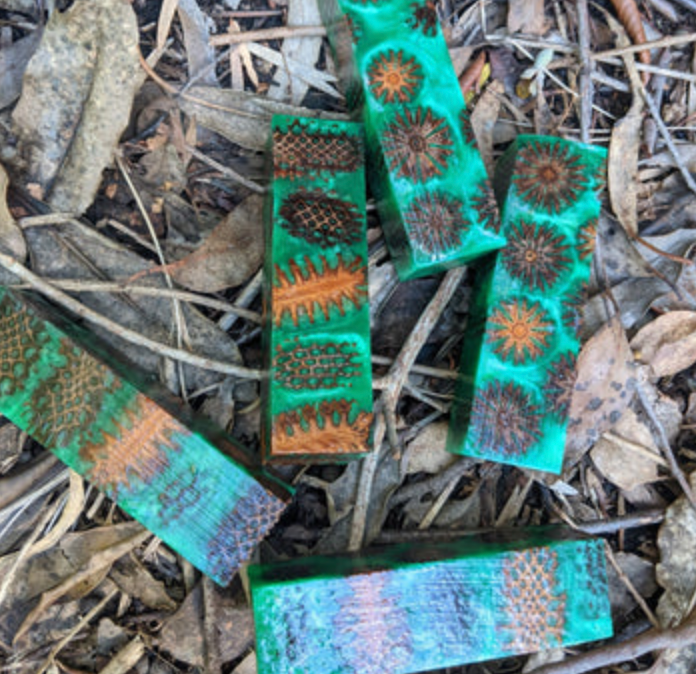8 Steps to Champagne Sabering
Champagne is mostly consumed (with higher consumption per head) during special occasions - weddings, birthdays and or the horse races. If you want to take...
Grocke Knives
The Barossa Valley is a place we associate with fine wine, dining, days of leisure, tasting and exploring the region. This can not be said...
Local SA Woodworkers Chopping Boards
Since moving into our new location at 330 Goodwood Road Clarence Park, we have met a lot of the local characters in the community. It...
Butchers Boning Knife
This knife is a sample boning knife we made with a Damascus finish which we probably never make again. If you'd prefer otherwise (aka -...
The Big Red Chefs Knife
Winter is here and time for soup. With Thai flavoured Pumpkin soup on the menu, I decided to use my Big Red Chefs Knife with Orange...
Golden Wattle Handle
Teamed up with Black resin and orange spacers in honour of indigenous Australians. Quite happy with the look :)
Santoku with Grenache Vine Handle
Santoku's have quickly become the popular first knife for cooking enthusiasts and chefs. Previously the longer and heavier 'chef's knife' was preferred, mainly for its...
BBQ Anyone?
I wish Shannon would let me pilfer the growing dinner table collection... I'm getting hungry... I have seen in the back shed cheese knives, dining...
Australian Fillet Knife
The Fillet Knife. I myself am not a big fisherman however we have had many people enter our shed in the past 5 years who...










